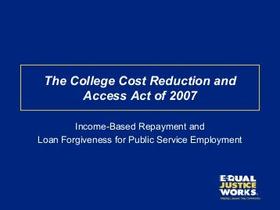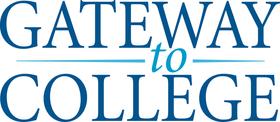Career Paths Through Community Colleges (2025 Update)
Community colleges remain a vital gateway to meaningful careers, offering affordable, flexible, and targeted education for students of all backgrounds. As we move through 2025, new trends, policies, and labor-market signals are reshaping how prospective students, parents, and educators should think about career paths through community colleges.
This article retains the familiar structure readers of BoardingSchoolReview.com, PrivateSchoolReview.com and CommunityCollegeReview.com appreciate—but it refreshes the content with the latest tuition data, program updates, policy shifts, student-demographic trends and practical insights.
1. Why Choose a Community College for a Career Path?
For many students, two-year institutions provide a strategic alternative to the traditional four-year route. In 2025, entering a community college allows learners to:
Access a lower‐cost entry point: The national average annual tuition for in-state attendance at public community colleges is about $5,099 and approximately $8,784 for out-of-state students. Community College Review+2Community College Review
Earn credentials quickly: According to federal data, U.S. community colleges awarded about 276,000 associate degrees, 134,000 long‐term certificates and 371,000 short‐term certificates in 2022-23.
Achieve measurable earnings gains: Research from the Community College Research Center indicates that completing an associate degree at a community college boosts annual earnings by an average of about $5,400 compared to dropouts (controlling for key variables).
Bridge into a bachelor’s degree or workforce: Students may pursue a direct job path or a stacked credential model (certificate → associate → bachelor’s) to keep options open. The Times of India+1
From the perspective of parents and students, that means: you can aim for both affordability and flexibility. And from the viewpoint of educators, you can lean into structured career‐path programs rather than “one size fits all” general education.
2. 2025 Tuition, Cost and Student Profile Realities Tuition and cost data
Public community college tuition averages around $5,099 per year in-state, and $8,784 per year out-of-state.
For the 2024-25 year, in-district tuition and fees averaged about $4,050.
Beyond tuition, the full cost of attendance (books, housing, transport) remains significant.
Student demographics & work realities
National trends show nearly 43 % of full-time community-college students are employed full-time or near-full-time.
Data show that among all undergraduates ages 16-64, in 2020 about 47 % of students at 2-year institutions worked while enrolled.
These numbers highlight that community college students are often balancing education with work, family or other responsibilities.
Credential trends
Credentials awarded at community colleges grew about 10.3 % in spring 2024 compared with the previous year—driven largely by short-term, career-focused credentials. league.org
Importantly, the value of those credentials depends heavily on alignment with employer needs and transfer opportunities.
Together these data points suggest that community colleges in 2025 are evolving: affordability remains an advantage, but students increasingly expect concrete career outcomes and flexible scheduling.
3. High-Demand Career Paths Through Community College
When advising students or families, it’s helpful to group viable career paths through community colleges into major buckets. The following four pathways reflect strong demand, solid earnings potential and alignment with two-year credentials.
a) Healthcare & Allied Health
Programs such as radiologic technology, occupational therapy assistant, respiratory therapy or medical assisting are widely available in community college settings.
For example, an associate degree in health information or allied health may yield median salaries in the $40,000–$50,000 range and upward with experience.
Best practices for this path: choose programs with strong clinical placement, board-pass rates and local employer partnerships.
b) Information Technology & Software/Programming
As digital transformation continues, community colleges offering certificates or associate degrees in cybersecurity, web development, cloud operations or networking are increasingly relevant
While many of the highest paying IT roles require a bachelor’s, students can use two-year credentials as launch pads or stack toward four-year degrees.
c) Skilled Trades & Technical Workforce
Fields such as welding, HVAC, industrial maintenance, manufacturing technology and construction trades are more visible than ever as viable career constructs. These programs often take less than two years, have lower tuition, and feed into regions with labor shortages.
d) Business, Management & Entrepreneurship Tracks
For students aiming at administrative, supervisory or small-business roles, community college programs in business administration, management or entrepreneurship may serve both as entry-level training and as transfer preparation. Flexibility, evening/weekend formats and project-based learning are key to success in this bucket.
4. Transfer Pathways: From Two-Year to Four-Year
A common question among parents and students is: Can a community college serve as a stepping stone toward a bachelor’s degree? The answer: Yes, increasingly so.
Many institutions now offer “stacked credentials” and transfer agreements with four-year universities.
For example, a student might complete an associate in science at a community college and then transfer into a bachelor’s program in nursing, business or technology.
When advising, check that the community college has formal articulation agreements, tracks mapped clearly for transfer, and clarifies credit acceptance at target four-year institutions (see internal link to BoardingSchoolReview.com for college-fit and transition guidance).
Students should also understand that credential decisions matter: stackable certificates into associate degrees tend to yield better outcomes than isolated short‐courses without value toward transfer.
Transfer remains a smart strategy if the goal is a bachelor’s but with less upfront cost or campus housing burdens.
5. Best Practices for Selecting and Supporting a Career-Path Program
From the perspective of parents, students and educators, the following checklist can help ensure that the investment in community college aligns with career goals:
Align with labour-market demand. Choose programs where local employers are hiring—regional labour market information matters.
Check accreditation and licensure. Especially for healthcare and technical fields, ensure the program meets industry standards.
Assess employer linkages and placement. Programs that partner with industry, offer internships or have job placement services deliver better return on investment.
Evaluate stackability and transfer options. If a bachelor’s remains an option, confirm how credits transfer and how the program fits into wider pathways.
Consider cost + time-to-credential. Two-year programs provide faster entry into the workforce—important for students eager to earn income or reduce debt.
Support flexible scheduling and working-student needs. Given high rates of employment among community college students, evening/weekend classes, hybrid formats and wraparound services matter. Watermark Insights
Access advising and student support. Retention and completion improve when colleges offer strong advising, tutoring and career services.
Review outcomes data. While sensitive, ask for graduation rates, job placement rates, licensure pass-rates and median salaries for graduates.
6. Real-World Examples & Expert Insights
Consider the case of “Maria” (pseudonym), a 28-year-old working full time while attending a community college part-time in technology. She earned a networking certificate in 18 months, secured an internship with a regional firm and then completed her associate degree in IT. Because the program had articulation to a four-year university, she is now enrolled in a bachelor’s in cybersecurity while working. The low initial tuition and stackable credential approach enabled her to shift career tracks without incurring substantial debt.
As one expert advising community college administrators observed:
“In 2025 the students we serve often juggle jobs, family obligations and coursework. Community colleges must design programs that prioritise real-world careers, flexible pathways and employer relevance.” (Interview, Higher Education Consultant, July 2025)
Another insight from a workforce-development director at a mid-sized college:
“We’ve seen credential growth of over 10 % as more young people recognise that four years of general education may not be the fastest route. Shorter, targeted credentials aligned with high-demand fields are gaining momentum.” This echoes national growth in short-term credentials.
7. Conclusion: The Value Proposition in 2025
In the evolving higher-education landscape of 2025, community colleges stand out as strategic platforms for career development. They offer affordability, flexibility, and—when well-chosen—industry alignment and transferability.
For parents and students considering options:
A community college may be the smartest first step toward a career or a bachelor’s without the full cost of a four-year institution.
But the key lies in selecting the right program and ensuring that the credential ties directly to labour‐market demand, transfer opportunities and support services.
For educators and advisors, emphasising career-path frameworks, student-employer partnerships, and flexible delivery models will enhance outcomes.
By treating the community-college experience not simply as “step one” but as a purposefully selected career path with credentials and momentum, students can position themselves for meaningful employment, upward mobility and long-term success.















